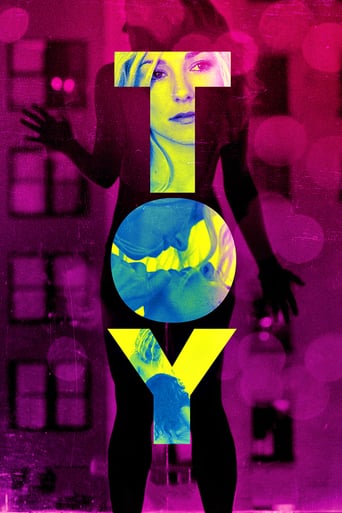

Just perfect...
... View MoreGood idea lost in the noise
... View MoreLike the great film, it's made with a great deal of visible affection both in front of and behind the camera.
... View MoreI enjoyed watching this film and would recommend other to give it a try , (as I am) but this movie, although enjoyable to watch due to the better than average acting fails to add anything new to its storyline that is all too familiar to these types of movies.
... View MoreIf you look up "temperamental artist" you will see that a picture of Chloe (Briana Evigan) has replaced my drama teacher. Chloe has substance and emotional issues in dealing with the suicide of her mother, although there is a deeper issue hinted at and revealed an hour into the feature. Chloe has plenty of money to pursue her career as a primarily black and white nude photographer. She has decided to make a concept film (within this concept film) and interviews women through various filters. She befriends Kat (Kerry Norton) a prostitute nearing the end of her career. Kat has pecuniary issues.I wasn't sure where the film was going as I watched a ceaseless drama of two lives.The film has ample sex and nudity without the feel of soft core. The film makes you feel depressed and drained like Chloe in a bitter-sweet ending. Clearly an art film, not for everyone. Chloe' s concept film is shown at the end, Guide: F-word, sex, FF sex. FF nudity.
... View MoreI just saw "ToY" Saturday, June 4 at FilmOut, the Queer film festival in San Diego, and it was magnificent, wiping my cinematic palate clean from the aftertaste of the opening movie the night before, "Kiss Me, Kill Me." The odd typography of the title was the deliberate choice of its director and co-writer, Patrick Chapman, who was an artist before he got into filmmaking and so far has made only two feature-length movies. In a question-and-answer session right after the showing that featured Chapman, co-writer Alissa Kokkins and one of the film's two female leads, Briana Evigan, Chapman said that the basic idea of the title was to say it was a story about two people who "toy" with each other. Maybe that was the original concept, but as he, his writers and his cast developed the project it became something much deeper and richer than that. The promo line for the film is, "Love does not heal the broken," and indeed that could serve as a summary of the film since the central characters are two people, both deeply wounded by the stressors of life, who come together, briefly make each other more or less happy, but then are pulled apart by their own unhealable traumas. The film begins with Chloe Davis (Briana Evigan), a 20-something artist from a well-to-do family; her mom died some time ago and her father Steven (Daniel Hugh Kelly) is fighting a losing battle with her to get her into rehab — did I mention she has a drug problem? She's a movie artist, isn't she? — and to pressure her to sign away her rights to the money from the family foundation set up in memory of her dead mother. When she isn't escaping rehab and snorting coke, Chloe is working on an elaborate project documenting the lives of women who make their livings with their bodies — mostly prostitutes but also models as well (and one of the women she hires as a model gets angry when she realizes Chloe doesn't think modeling and prostitution are all that different). Chloe photographs these people both for still pictures and for video; the stills are often nude or semi-nude and almost clinical in their apparent detachment, but the movies are filmed through smoky or scratched glass that blurs many of the features of the people in them as Chloe asks them about their lives. Most of the prostitutes she interviews are women, but at least one is a male-presenting man and one is obviously Transgender. The central intrigue of the film begins when Chloe meets hard-edged forty-something Kat Fuller (Kerry Norton), who comes into the interview so hostile she won't even give Chloe her name ("Why do you want to know?" she says), but eventually she opens up while keeping her hard edge. Chloe and Kat drift into a physical relationship and seem on some level to be right for each other despite the fact that the principal thing they have in common is sheer neediness.ToY is a marvelous movie, powerfully directed and written, vividly acted by the principals as well as a fairly large supporting cast (many of whom we only see in the interview scenes Chloe shoots with them); Briana Evigan, who aside from her short hair bears a striking resemblance to Janis Joplin (and judging from her work here she would be an excellent choice to play Janis if she either has a singing voice or they can find her a good double), really inhabits the part of Chloe, and she and Kerry Norton play brilliantly off each other: the airheaded artist whose well-off family has (mostly) bought her way out of trouble, and the over-the-hill sex worker twice her age who's had to survive as honestly as possible in a hard and mean world. I found myself wondering if there had been a real-life model to Chloe's character — there was: the real-life 1970's photographer Francesca Woodman — and both Chapman and Evigan said they studied Woodman's life as a way of making Chloe a more realistic character. I also couldn't help but draw a parallel between ToY and the recent film Room, which I had also just seen and found incredibly deep and moving (and, by coincidence, they're not only both stories about female survival under incredible odds, both star actresses who go by the name "Brie"!). The stories aren't all that similar but the intensity and compassion with which they are told are, and so is their common theme of how women are exploited sexually by men and the desperation, survival skills and self-hatred they develop to deal with the way they're used.
... View More